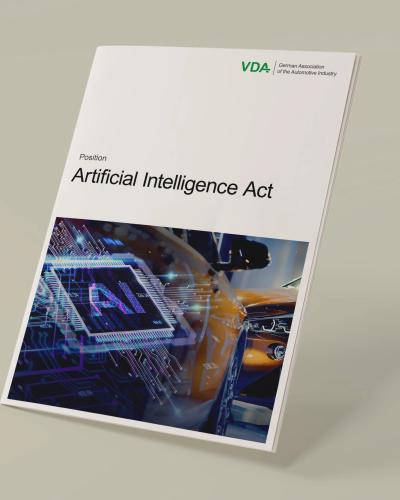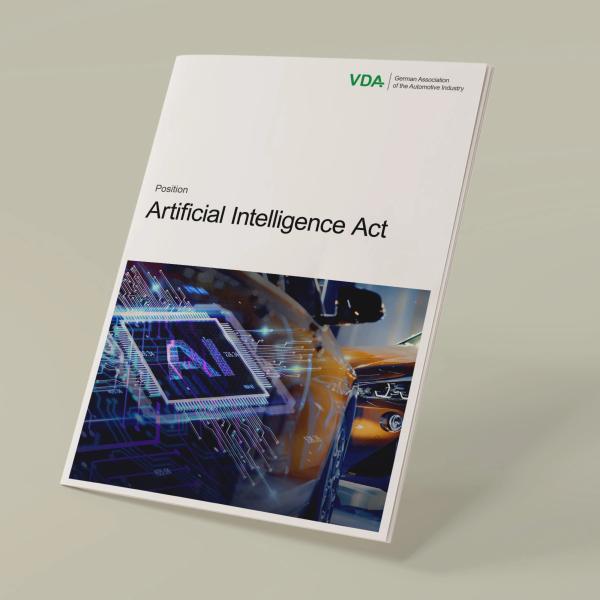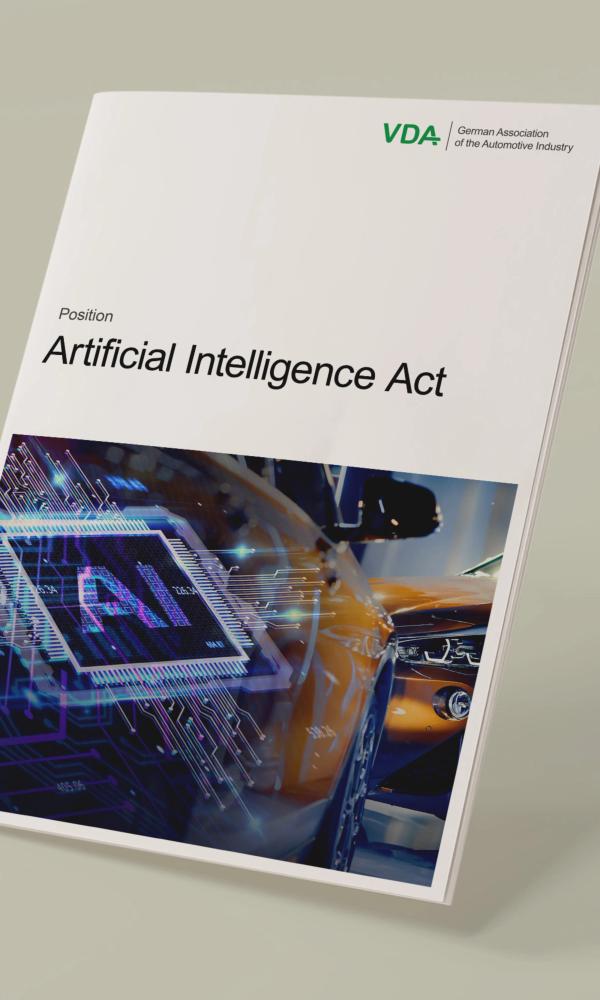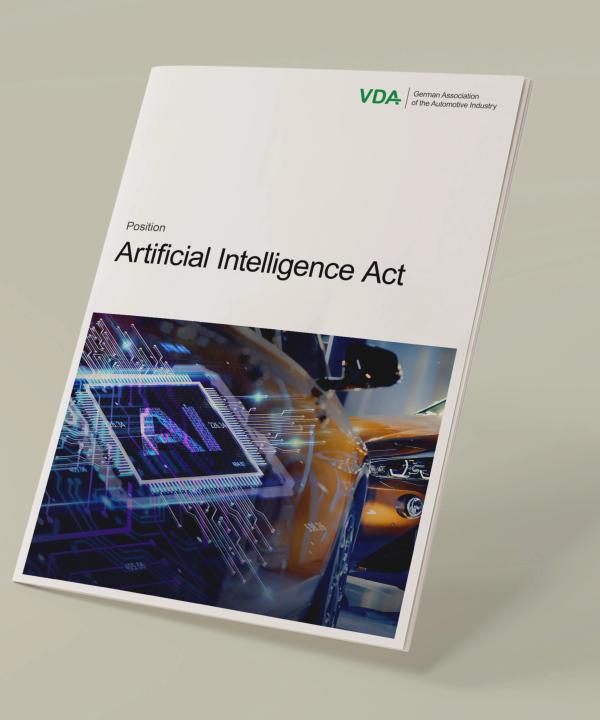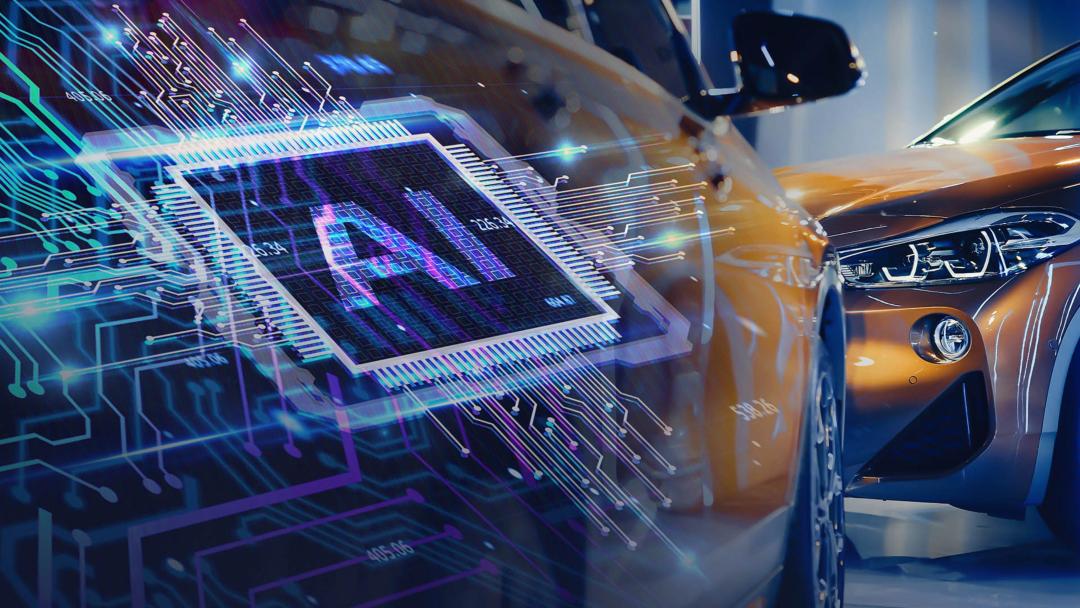
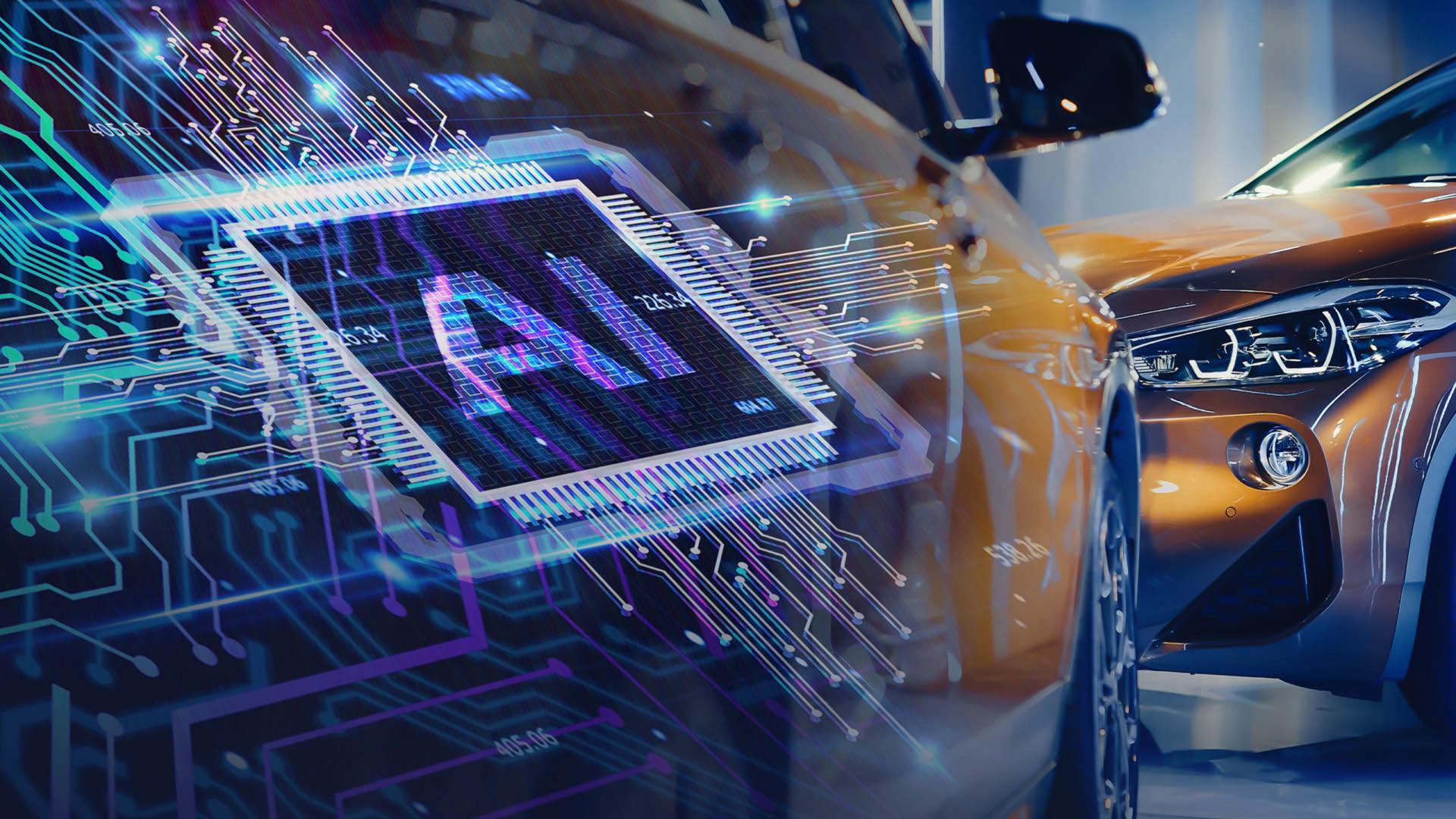
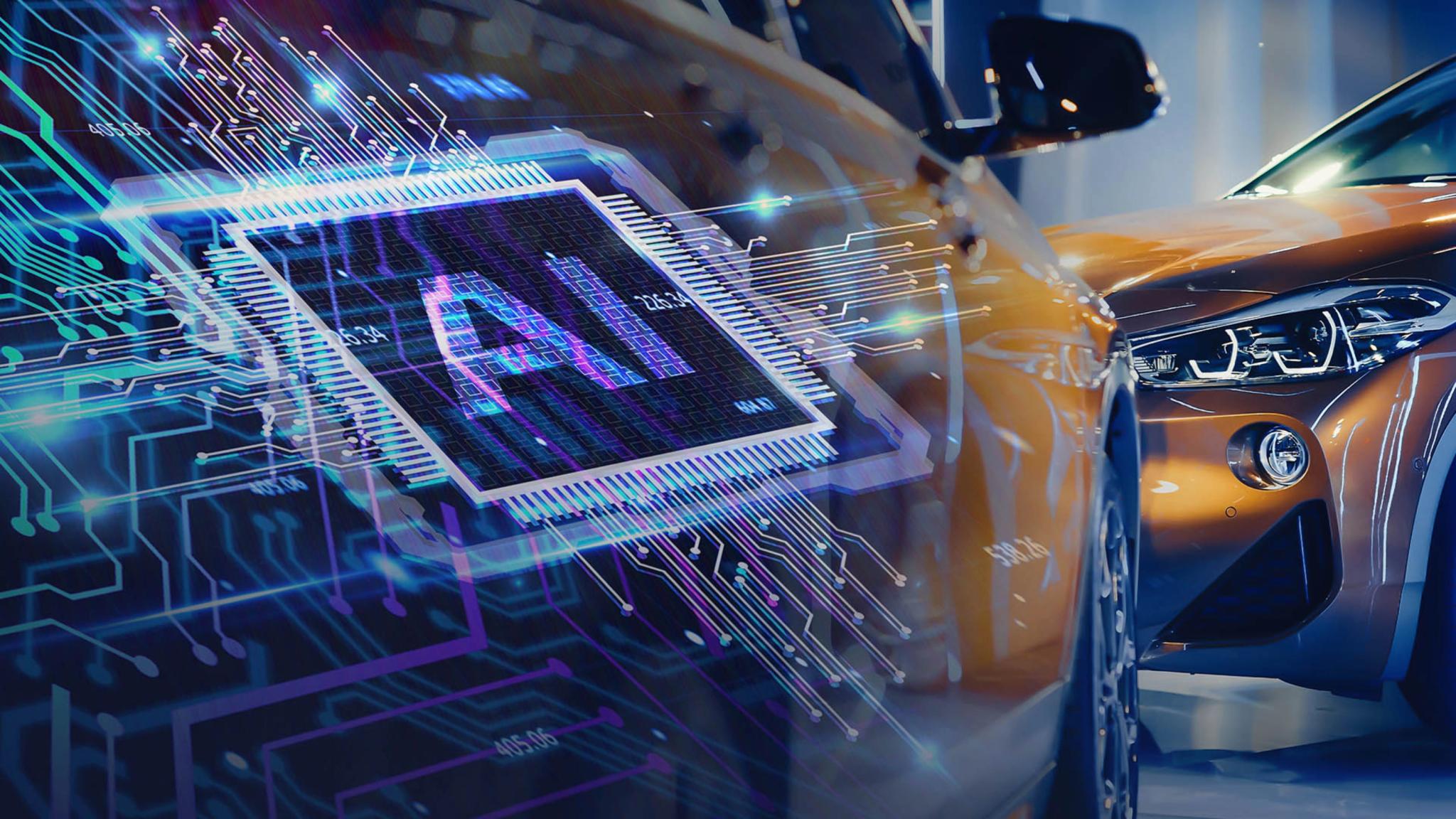
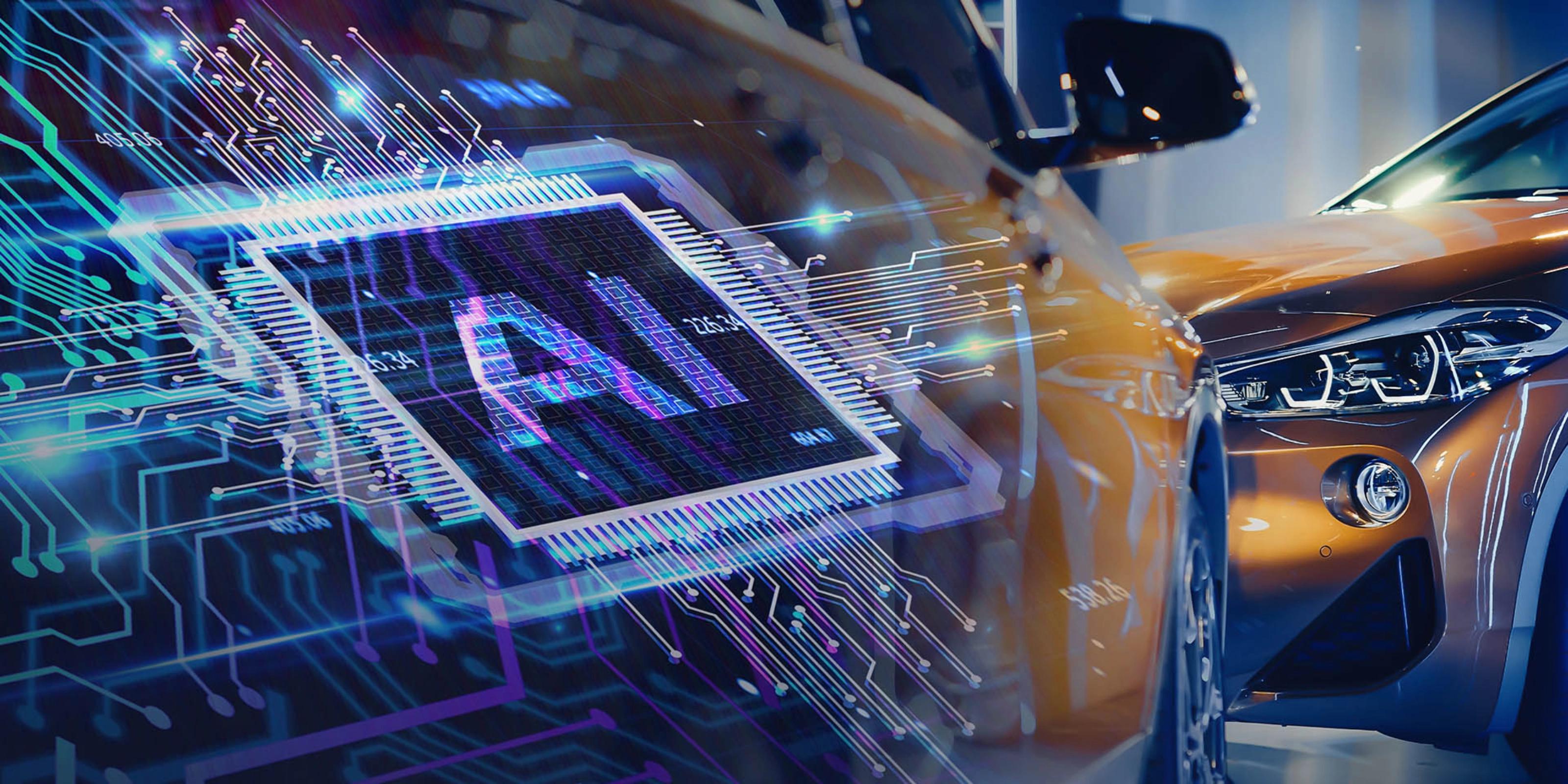
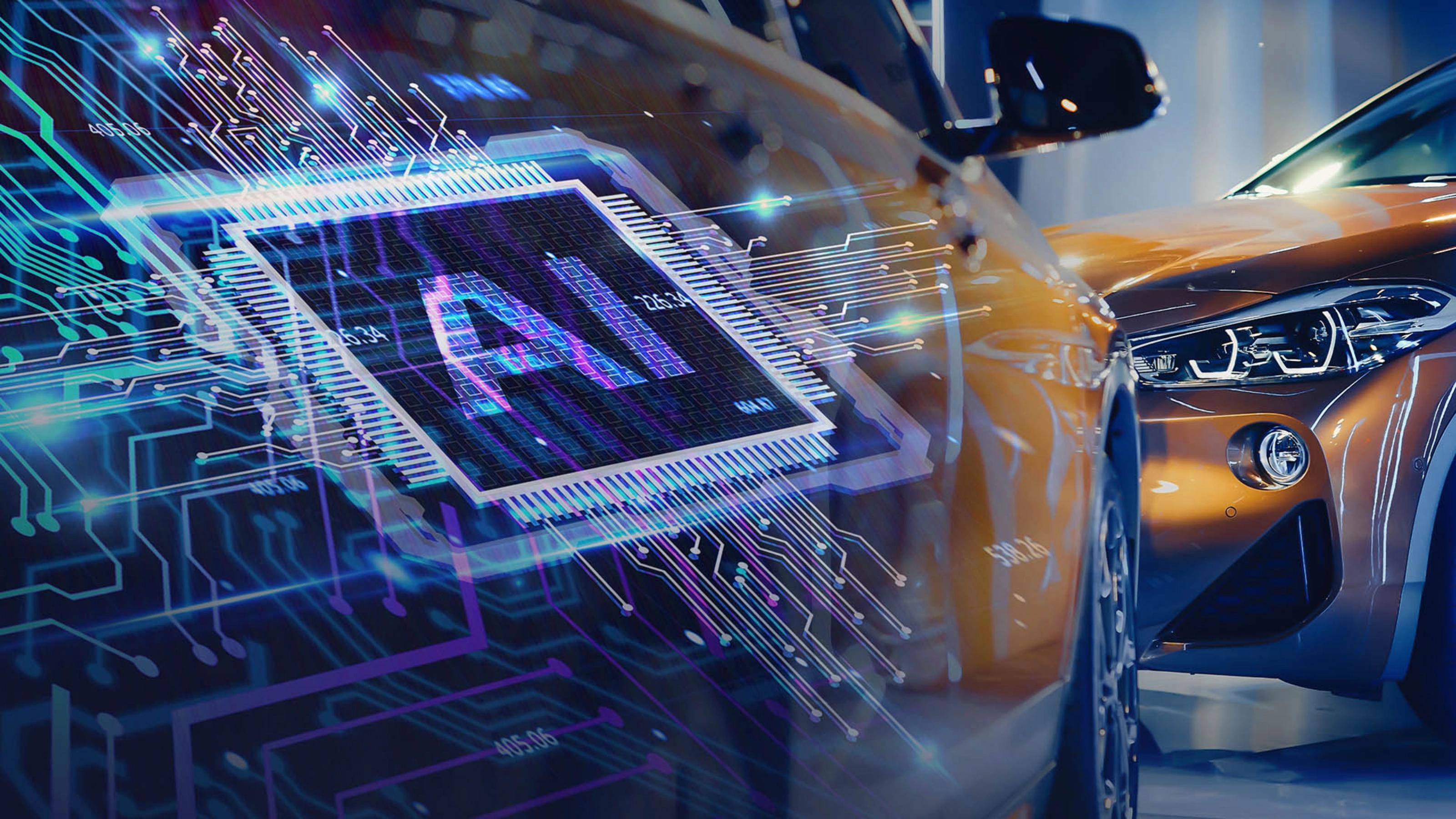



Artificial Intelligence Law
KI: Key Technology with Challenges
In mid-June, the EU Parliament decided its position on the EU regulation of AI. With this draft, the VDA still sees many opportunities for optimization. About the expectations of the German automotive industry of the EU legislative package as well as current and future possible uses of AI in the industry
In mid-June, the EU Parliament decided its position on the EU regulation of AI. With this draft, the VDA still sees many opportunities for optimization. About the expectations of the German automotive industry of the EU legislative package as well as current and future possible uses of AI in the industry
Release: July 18, 2023
Voice assistants, facial recognition, streaming - applications in which artificial intelligence (AI) plays a major role have long been part of our everyday lives. And at least since the hype surrounding the chatbot ChatGPT, the topic of AI has been on everyone's lips.
In the automotive industry, AI-based systems have long been used in various secured and tested areas - along the entire value chain, i.e. in all production steps from the raw material to the end product. The applications are usually embedded in standard software and support or optimize existing systems. Further fields of application will be added in the future, since AI is a key technology in the increasing automation and development of Industry 4.0.
What seems certain is that the enormous increase in AI performance and its various fields of application offers tremendous opportunities for science, business and society. But this boom is accompanied by important and legitimate issues. For example, it is still unclear how to deal with legal positions such as copyright protection of products or with dangerous situations. The latter are of utmost importance for the vehicle and supplier industry in view of the further developments in production and automated and autonomous driving. In short: a binding legal framework is urgently needed.
What is European politics doing on the subject of artificial intelligence?
The good news: Europe could be the first location in the world with a uniform, cross-national legal framework for dealing with AI. As early as April 2021 - long before ChatGPT was intensively discussed - the European Commission published a corresponding regulatory proposal. At the beginning of December 2022, the EU Council agreed on a common position on the Artificial Intelligence Act (AI Act). On June 14, 2023, the EU Parliament agreed on a position on the draft law.
On July 18 and over the next few months, the members of the European Parliament will continue to negotiate the final wording of the law with the EU member states and the EU Commission (trialogue). If an agreement is reached before the European elections in 2024, the AI regulation could probably not apply until 2026, as the law provides for transition periods of up to two years. The AI Act will also have a strong impact on future European AI regulatory projects. For example, the AI liability guideline is already in the starting blocks.
How does the German automotive industry assess the AI Act draft?
Autonomous and connected driving, intelligent production, design, infotainment: AI plays a fundamental role in various aspects of tomorrow's mobility - with the aim of making vehicles more efficient, user-friendly and safer, while also optimizing production processes.
Also for this reason the VDA expressly welcomes the creation of a legal framework for the development and legally compliant use of AI - and is contributing its industry expertise during the trilogue negotiations. However, the VDA and its member companies, especially OEMs and large suppliers, still see a need for adjustments in several areas of the current version. The jointly developed points of criticism and demands can be read in the recently published VDA position paper on the AI Act.





Our goal is a balanced regulatory approach that takes into account the different perspectives of the automotive industry, creates legal certainty and leaves room for innovation. This is the only way for Europe to remain an attractive and globally competitive AI location.Anja MisselbeckHead of VDA technology strategy department
The most important requirements of the VDA in detail:
1. Specifications are still too vague for automotive companies.
The basic idea of the AI Act is a horizontal regulatory framework. This means that the requirements are not industry-related, but apply to several sectors and areas of life at the same time. However, companies can only implement them once the regulations are available for the automotive industry in a sector-specific manner and specifically for in-vehicle applications. Also problematic: The law refers to standards and norms that will take several years to develop.
"Currently there is a risk that inappropriate rules will be adopted for the large number of applications. This can ultimately inhibit innovation and the use of AI. We are committed to ensuring that the vehicle-specific approval procedures, including norms and standards, are taken into account in the AI Act and designed to be practical," says Anja Misselbeck.
2. Not all AI applications in and around the vehicle should be classified as "high risk".
Another special feature of the regulation is its risk-based regulatory approach. Accordingly, the AI applications are divided into four risk groups: from low to high risk and finally to prohibited practices. The higher the potential for damage that the AI systems can cause to users and possible third parties, the stricter the requirements. The high-risk group, for example, should include applications that could supposedly threaten health or fundamental rights of human beings.
In this context, it would be problematic for the automotive industry if the term "safety component" for the classification of a high-risk AI system continues to be defined in such a sprawling manner. Because the current definition states: "For the purposes of this regulation, the term 'safety component of a product or system' means an element of a product or system that performs a safety function for that product or system, or the failure or malfunction of which endangers the health and safety of people or property." With this definition, everything in and around the vehicle could, in the worst case, fall into the high-risk category - including purely technical processes with no risk potential, such as in development and production or when monitoring products and systems. In addition, all vehicle components relevant to approval and their applications could ultimately be subject to the very strict requirements. "This must be avoided," says Anja Misselbeck and continues: "Only those applications should be strictly regulated that can actually pose massive dangers and risks in practice."
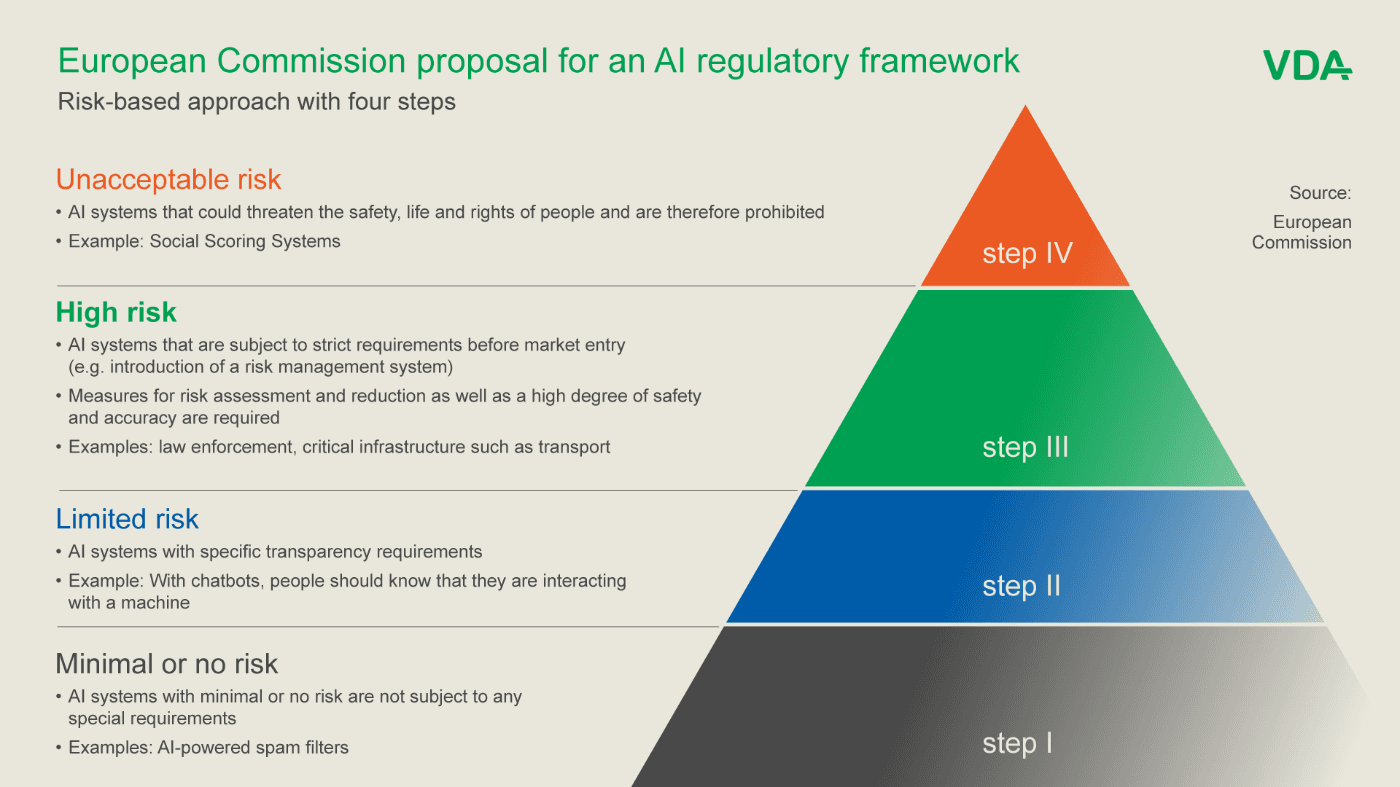
3. Third party conformity assessments should only be carried out where absolutely necessary.
The draft regulation stipulates that high-risk systems must be certified and tested by third parties. Such assessments mean a significant additional effort, high costs and should therefore only be used in absolutely necessary cases. According to the current status, however, numerous smallest AI applications such as sensor and camera settings would also be affected.
Anja Misselbeck: "When specifying the high-risk area, it is crucial that the requirements can be technically implemented by the automotive companies. We want clear rules, but they have to be workable and more specific so that AI developers can work with them."
4. The requirements for data and data sets must be made more practical.
The planned transparency obligations for AI applications must not collide with the protection of trade secrets. There is also a risk of regulatory overlaps or contradictions, for example in cyber security or data protection. Instead of additional new regulations, an addition to the existing regulations in the automotive sector would be welcome.
Overall, the regulations for the use of data and datasets sometimes go too far, since there is often not enough data for all AI use cases in the industry to approach the topic unbiasedly. For the development of secure AI applications, the industry first needs a larger pool of training data in order to be able to represent situations virtually: "In future AI-supported simulations we will be able to emulate and test many more situations in which people come into contact with AI. The data obtained helps, for example, to be able to react more appropriately in dangerous situations" - says Anja Misselbeck.
The examples make it clear that the European AI Act will have a massive impact on companies in the automotive and supplier industry. In the further trilogue process, the VDA is committed to ensuring that the industry's perspective is taken more into account and appropriate changes are made. Otherwise, Germany and Europe risk losing competitiveness internationally.
Possible uses of artificial intelligence in the automotive industry
Many people immediately associate AI with self-driving cars – but it is also a game-changing technology for automotive companies to modernize vehicle engineering, production and connectivity. The basis for their use is the always responsible use of AI solutions.
Some examples: In research and development (R&D), AI can increase the speed of innovation while reducing the cost of innovative technologies. Examples include CAD models (“computer-aided design”) and AI-based simulations that save costs when creating prototypes. In production, AI optimizes the maintenance of machines and reduces downtime, so that costs caused by malfunctions can be reduced and downtime can be better planned for. The basis for this is the so-called AI method "anomaly detection", which uses certain parameters to detect and report deviations in data in a matter of seconds.
There are currently no products in the automotive industry that solely contain AI software, are operated and controlled exclusively via AI applications, or whose applications complete all steps independently and without human intervention.
One thing is certain: the German automotive industry wants to continue to build the most climate-friendly, safest, most efficient and most modern cars in the world in the future. The commitment of the German automotive industry to the development of AI legislation in Europe shows the determination of the industry to make the transformation an international success story. Responsible use of AI will help vehicles to adapt even more individually to the needs of their occupants. Applications that reduce the frequency and severity of accidents or improve voice control assistants in vehicles also contribute to this.
Two examples from VDA member companies:
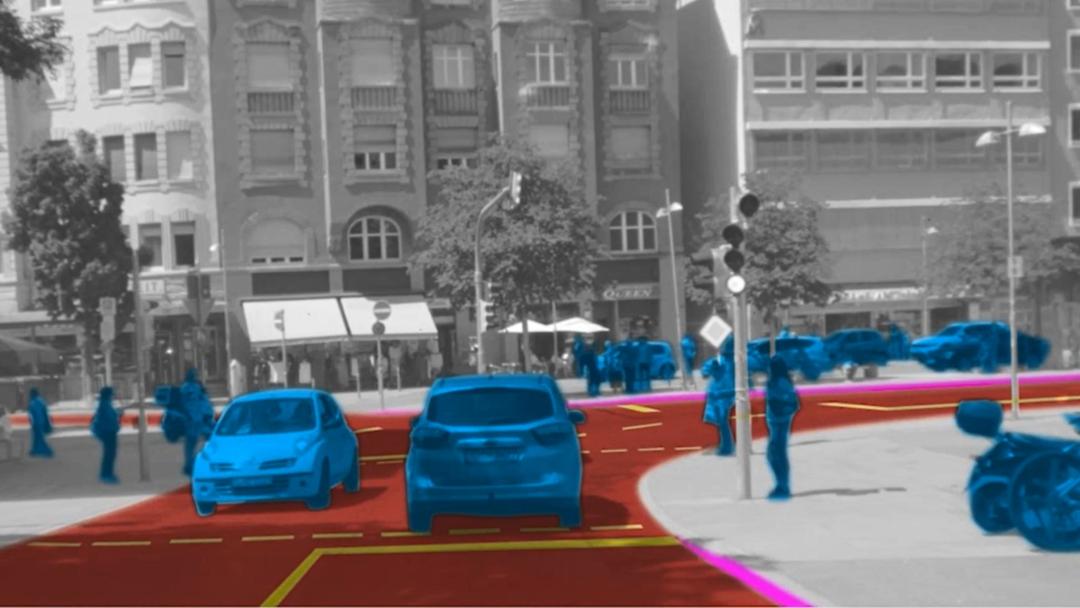
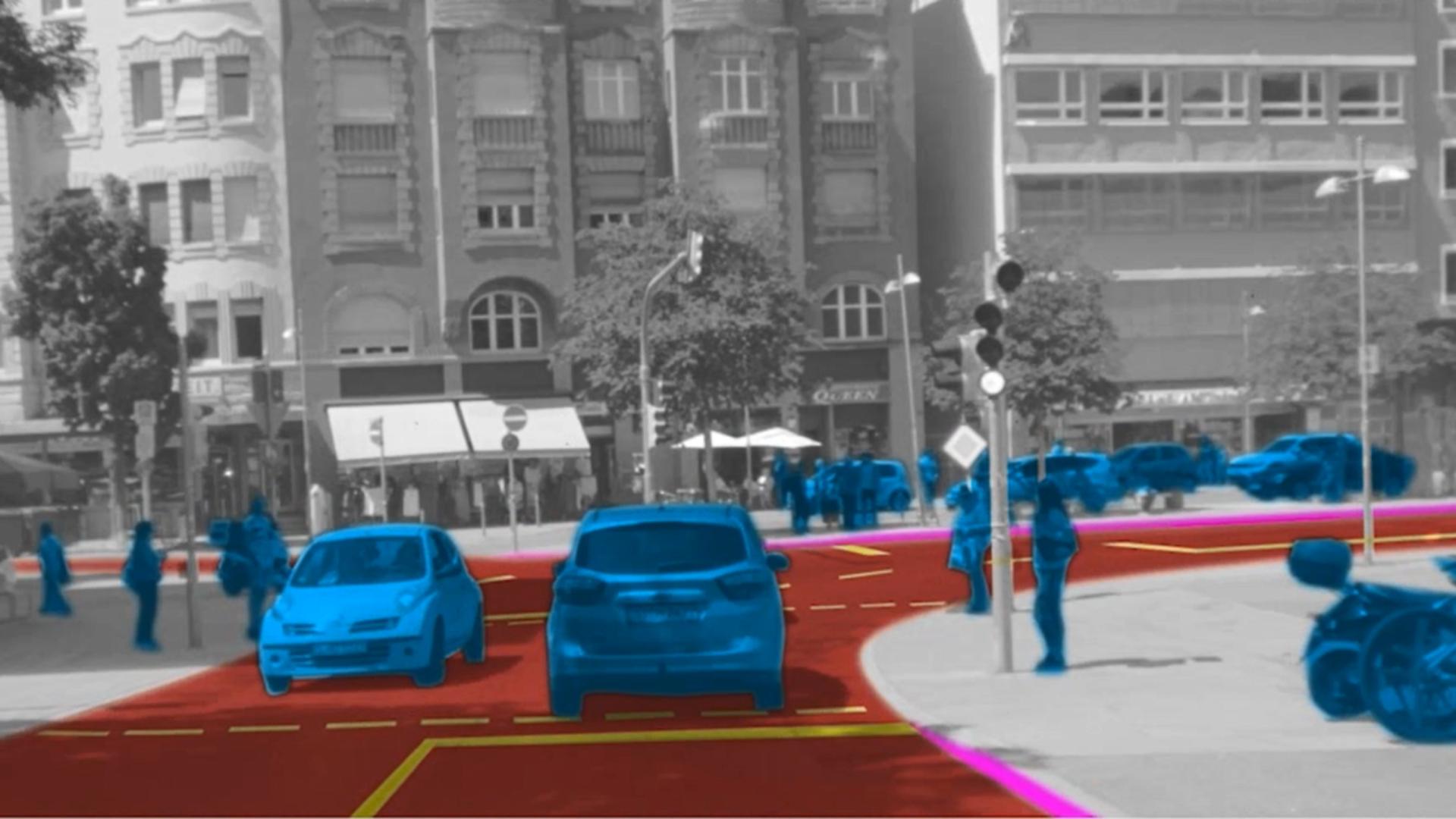

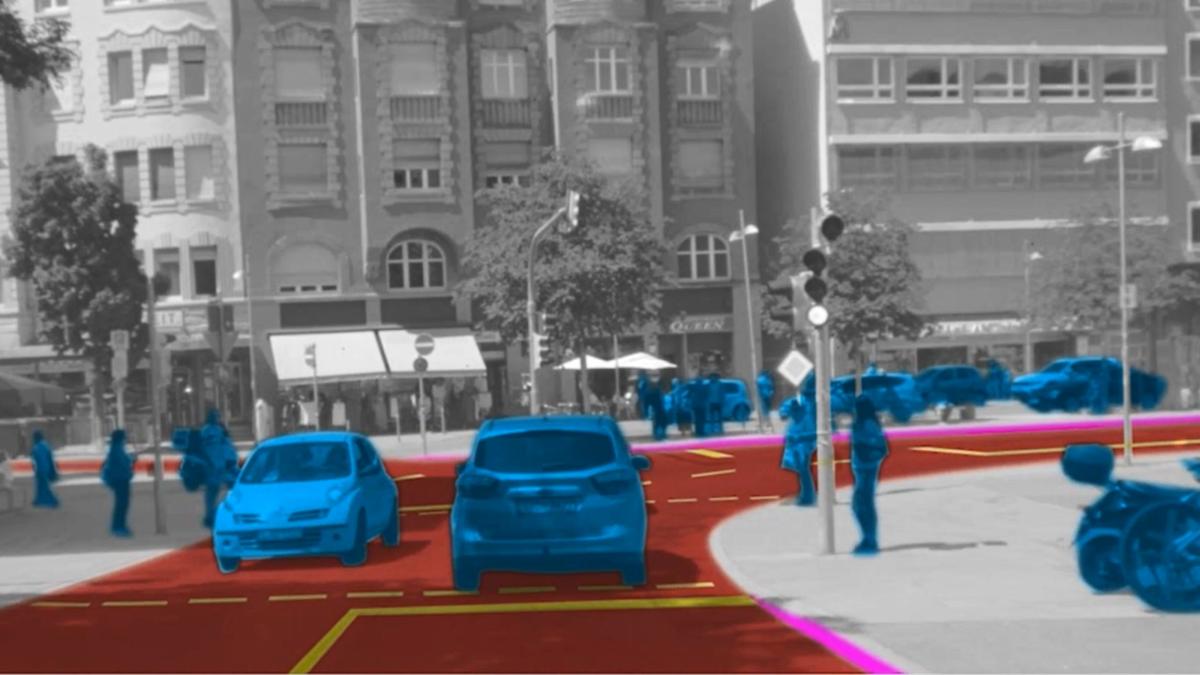

The front video camera from Bosch can reliably detect objects and people at any time.
The front video camera plays a key role in driver assistance as it reliably detects objects and people. The technology is suitable for video-based driver assistance systems as well as for automated driving. The camera captures the entire situation by combining classic image processing algorithms with artificial intelligence methods.
Several technical paths run in parallel during image processing: In the first path, the camera uses programmed algorithms to recognize the typical appearance of object classes such as vehicles, bicycles or lane markings. In the second path, the camera uses the optical flow and a special technology to detect raised, lane-limiting objects such as curbs. Pixels that belong together are tracked in their movement and a three-dimensional structure is estimated from the two-dimensional camera image. In the third path, AI methods are used, such as machine learning methods for object classification or semantic segmentation, for example to distinguish surfaces of the road and the roadside.
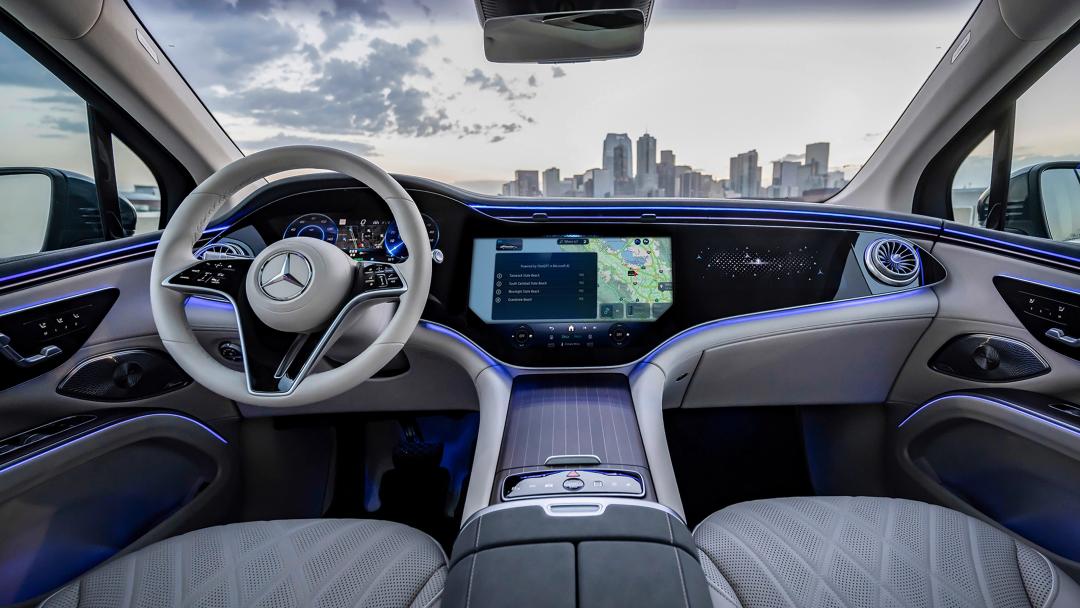
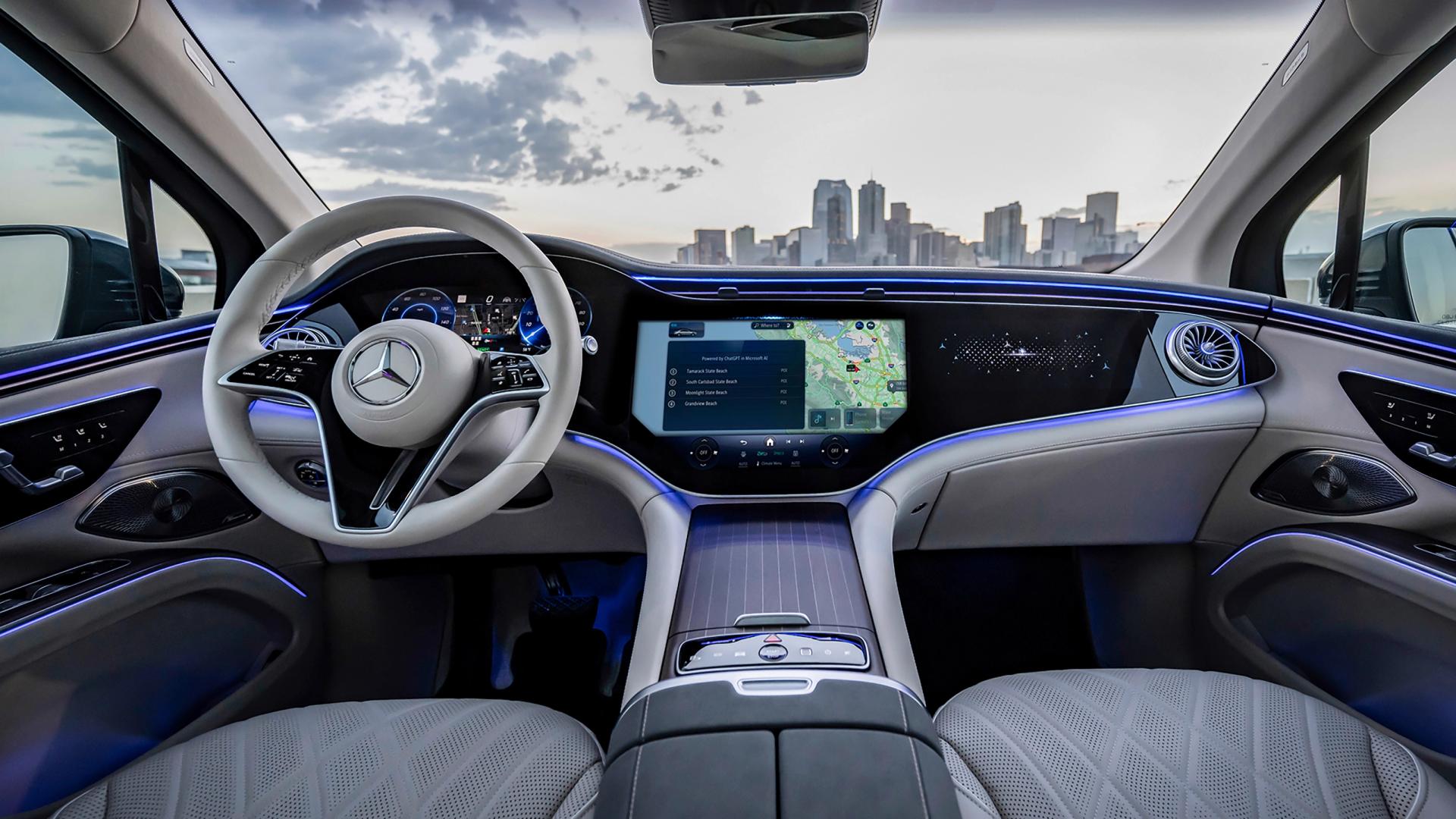

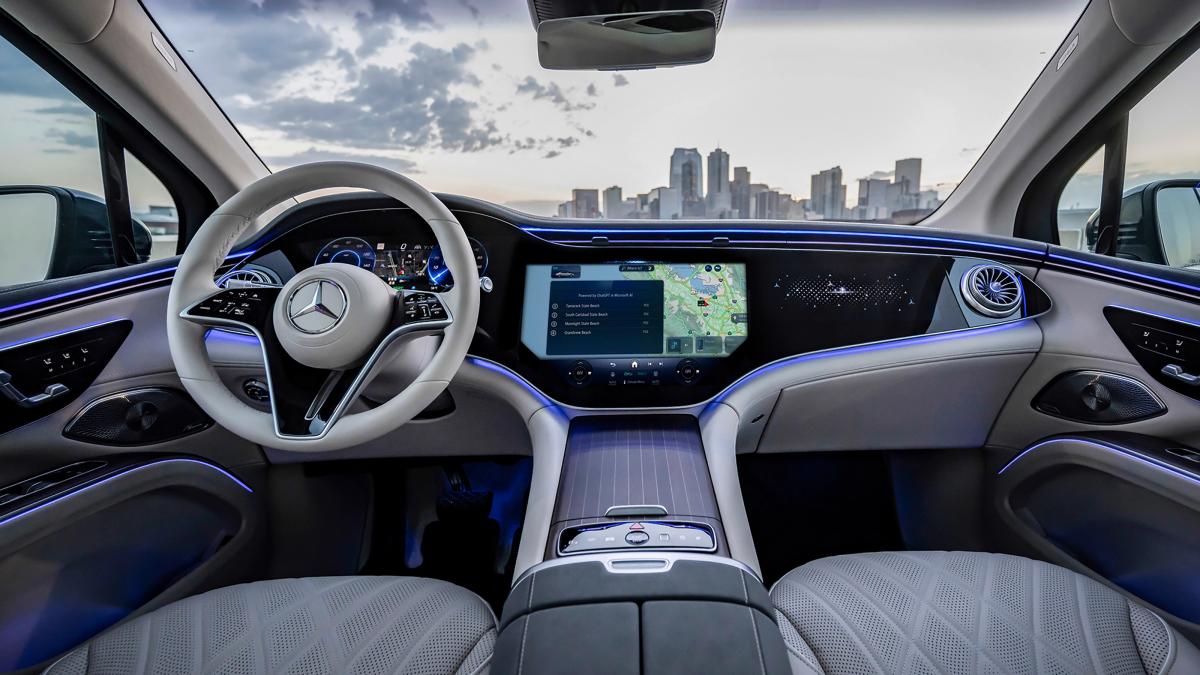

Mercedes-Benz relies on AI for voice control in vehicles.
With the help of ChatGPT, Mercedes-Benz would like to make the control of its MBUX voice assistant even more convenient in the car. The aim is that in the future the occupants will receive, for example, even more diverse information on sports results, the destination or answers to knowledge questions.
To this end, in June 2023 the company launched a program for customers in the USA whose model series are equipped with the MBUX infotainment system: With the integration of the so-called "Large Language Model" from ChatGPT, voice control expands their understanding of natural language and their variety of topics. Important: During the conversation, the driver's eyes remain focused on what is happening on the road.
Mercedes-Benz uses the large-scale generative AI models of OpenAI in combination with the security, data protection and reliability functions of the cloud computing platform Microsoft Azure. Mercedes-Benz relies on responsible use of generative AI solutions. Data protection is always a top priority. The company retains control over the IT processes in the background at all times because the voice inputs are stored in the Mercedes-Benz Intelligent Cloud, where they are anonymized and then analyzed. Customers find out what information is collected for what purpose and can make decisions about it.
Questions? Your contact persons:





Dr. Marcus Bollig
Managing Director

